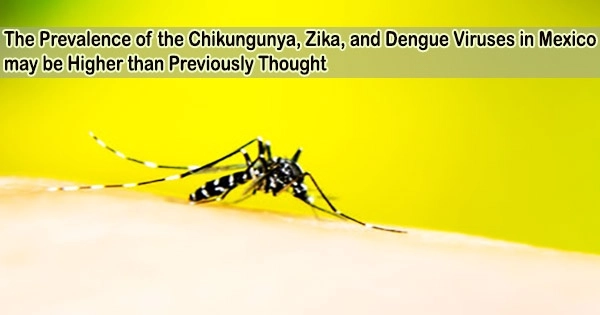Chikungunya, Zika, and Dengue are all viral diseases transmitted by mosquitoes. While they share some similarities, they are caused by different viruses and can have varying symptoms and complications.
Although cases of Zika, Chikungunya, and Dengue have all been reported in Mexico, modern diagnostic developments have increased the precision of serological testing. A study publishing Dec. 2 in PLOS Neglected Tropical Diseases by José Esteban Muñoz-Medina at the Mexican Institute of Social Security, Mexico, and colleagues suggests that current estimates of the incidence of arboviruses in Mexico may have been previously underestimated.
Chikungunya and Zika virus were first detected in Mexico in 2014 and 2015, respectively. However, up until 2017, the National Network of Public Health Laboratories’ diagnostic methods were limited to the detection of the dengue virus. The true prevalence of these three arboviruses and the prevalence of coinfections were unknown prior to the introduction of the novel approach.
Chikungunya is caused by the chikungunya virus (CHIKV), which is primarily transmitted to humans through the bite of infected Aedes mosquitoes, particularly Aedes aegypti and Aedes albopictus. The virus was first identified in Tanzania in the 1950s and has since spread to many parts of the world. Chikungunya is prevalent in tropical and subtropical regions.
The information generated in this study enriches the country with more precise epidemiological information on these arboviruses, which can help improve estimates of burden, morbidity and resource allocation, as well as providing information to design better diagnostic algorithms, given the possible scenario of new outbreaks or epidemics caused by these or other arboviruses that are currently circulating in the Americas.
José Esteban Muñoz-Medina
Zika is caused by the Zika virus, primarily transmitted by Aedes mosquitoes, particularly Aedes aegypti. The virus was first identified in Uganda in 1947 and has since spread to various regions, including parts of Africa, Asia, the Pacific Islands, and the Americas.
Dengue fever is caused by any of the four closely related dengue viruses (DENV-1, DENV-2, DENV-3, and DENV-4), which are transmitted to humans through the bite of infected Aedes mosquitoes, primarily Aedes aegypti. Dengue is a significant global health concern, especially in tropical and subtropical regions.
Researchers conducted a cross-sectional analysis of 1038 serum samples used to confirm the diagnosis of Dengue, Chikungunya, or Zika during the first three years of co-circulation of these arboviruses in order to ascertain the prevalence of Dengue, Chikungunya, and Zika in endemic areas of Mexico.
The serum samples were reexamined by the researchers using a test that could distinguish between any one of the three viruses in a single reaction.
The researchers discovered 2.4 times the rate of arbovirosis as was initially reported, taking coinfections into account, indicating that the incidence of the three viruses may have been underestimated. Future studies are need to offer current incidence estimates for each virus, though.
According to the authors, “The information generated in this study enriches the country with more precise epidemiological information on these arboviruses, which can help improve estimates of burden, morbidity and resource allocation, as well as providing information to design better diagnostic algorithms, given the possible scenario of new outbreaks or epidemics caused by these or other arboviruses that are currently circulating in the Americas.”
Muñoz-Medina adds, “We studied the circulation of two new arboviruses in a Dengue endemic area to assess the impact on their circulation and underestimation of cases.”
















